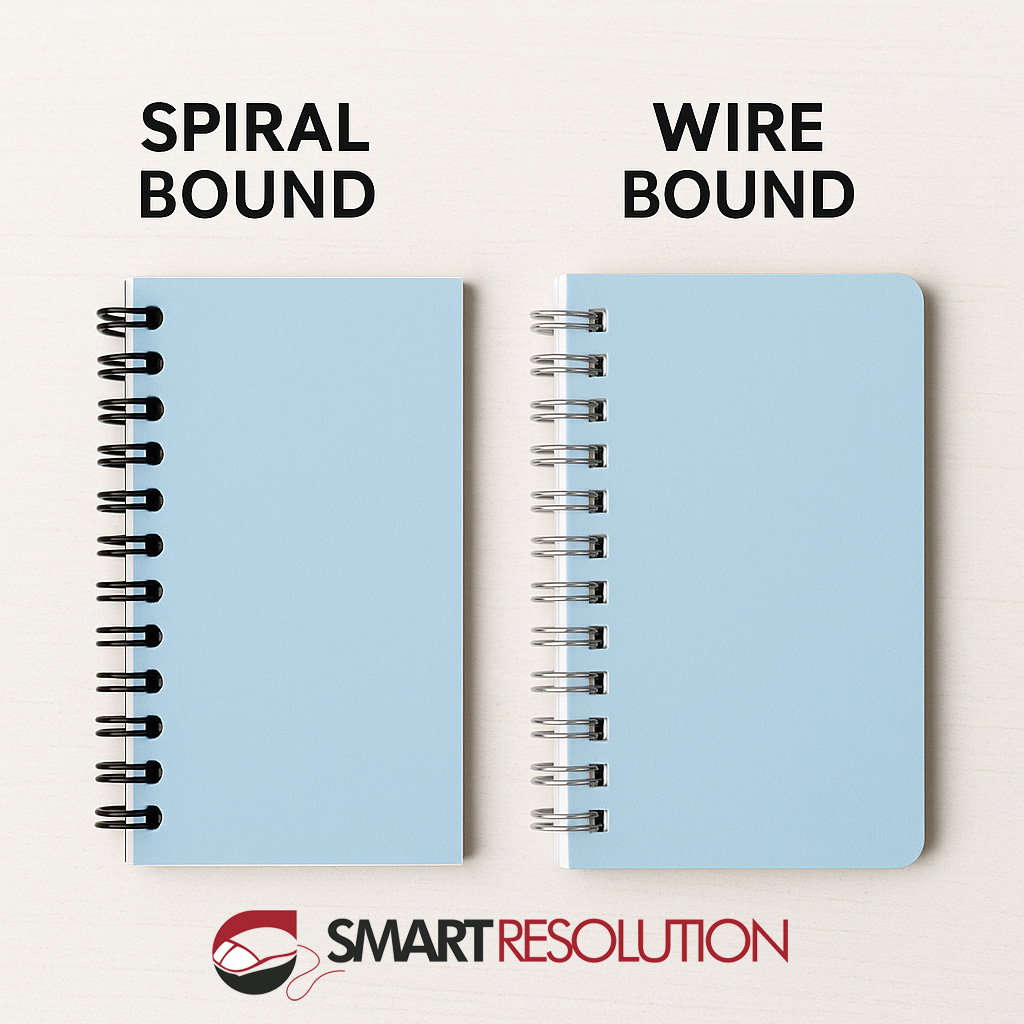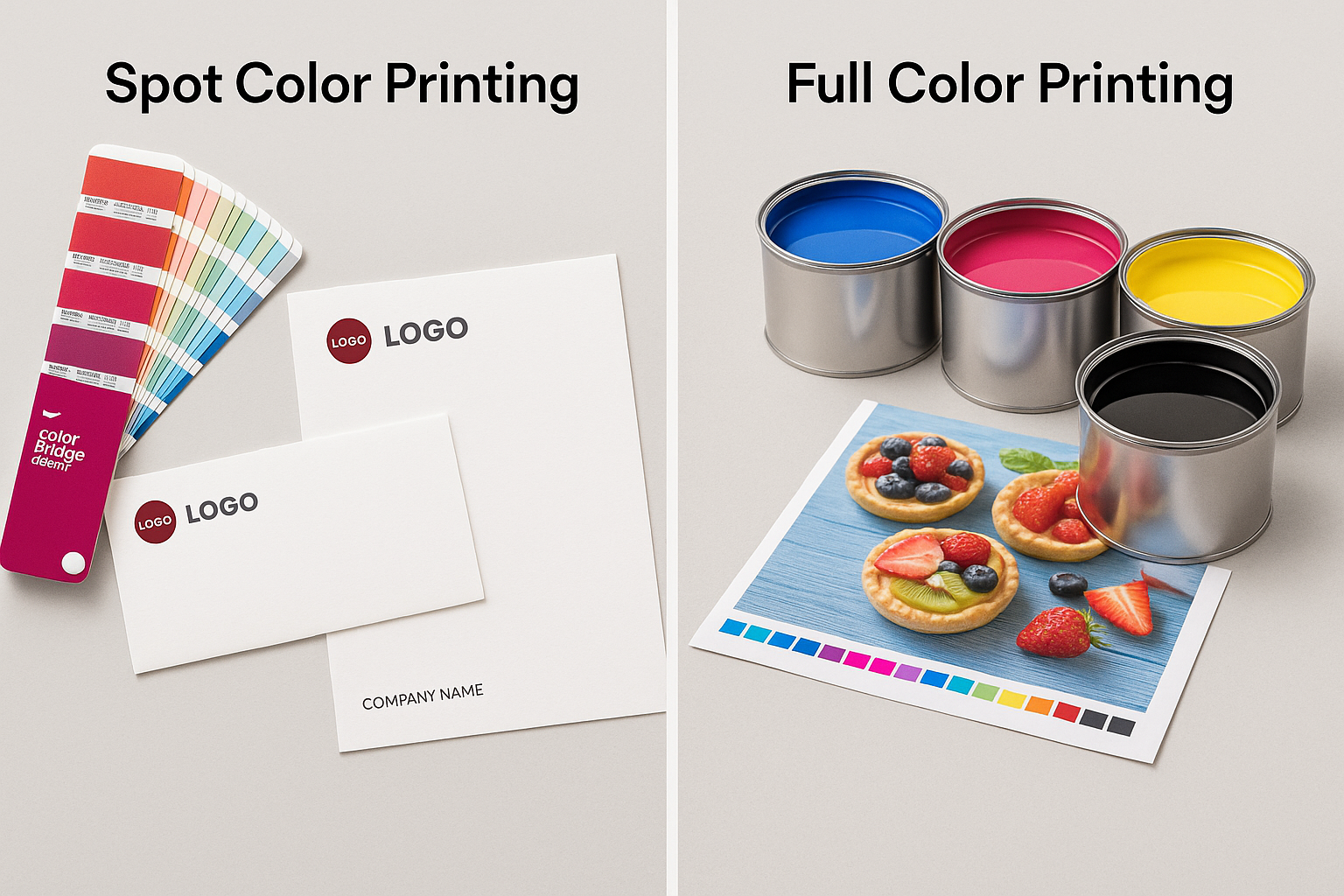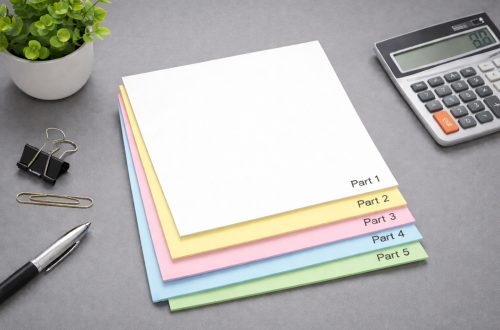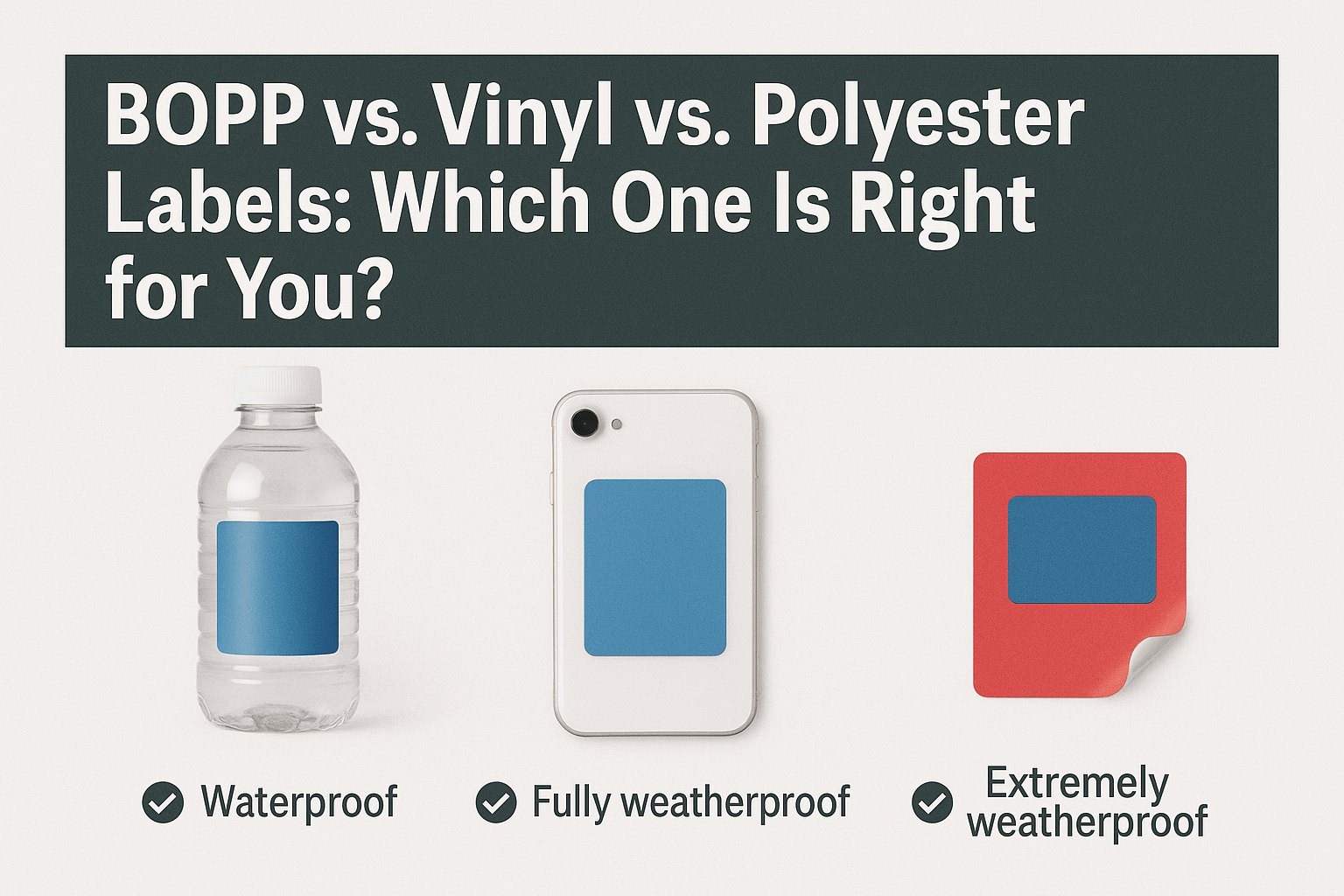Which Binding Style is Right for Your Printing Project?
When it comes to professional printing, the way your documents are bound can make all the difference in both functionality and appearance.
Two of the most popular binding methods are wirebound (also called twin-loop or Wire-O binding) and spiralbound (plastic coil). While they might look similar at first glance, each has unique advantages that make it better suited for different uses.
What is Spiral Binding?
Spiral binding uses a continuous plastic coil that threads through holes punched along the edge of your pages. Because the coil is flexible, spiral-bound books are highly durable and allow the pages to turn a full 360 degrees. This means the book can lie completely flat or fold back on itself without damage.
Key Features of Spiral Binding:
- Flexible and resistant to bending
- Pages turn smoothly and easily
- Available in a wide variety of colors to match your branding
- Commonly used for manuals, training guides, educational materials or business receipts
What is Wire Binding?
Wire binding, also known as twin-loop binding or Wire-O binding, uses double metal loops inserted through punched holes. The metal construction provides a sleek, professional finish that is popular for business presentations and reports. While wire binding also allows pages to rotate 360 degrees, it is less flexible than plastic coils and the wire loops can bend if crushed.
Key Features of Wire Binding:
- Strong and professional-looking design
- Often available in metallic finishes like black, silver, gold, or white
- Ideal for planners, premium notebooks, corporate reports, and presentations
- Provides a polished appearance that adds credibility to your materials
Side-by-Side Comparison
| Feature | Spiral Binding (Plastic Coil) | Wire Binding (Metal Loops) |
|---|---|---|
| Material | Flexible plastic coil | Durable double metal loops |
| Durability | Resists bending, great for frequent use | Rigid, but can deform under pressure |
| Page Rotation | 360°, smooth and easy | 360°, slightly stiffer feel |
| Appearance | Casual, colorful, versatile | Sleek, polished, professional |
| Best For | Manuals, cookbooks, training guides | Reports, presentations, planners |
Which Binding Should You Choose?
- Choose spiral binding if you need a practical, durable option that will withstand frequent handling. Spiral bound books are perfect for materials that are flipped through often.
- Choose wire binding if presentation and professionalism matter most. Wirebound books are ideal when a polished look is important.
Conclusion
Both spiralbound and wirebound styles offer 360-degree rotation and lay-flat convenience, but the right choice depends on your audience and purpose. Spiral binding delivers durability and flexibility, while wire binding elevates the appearance of your work with a clean, corporate finish.
Whether you’re creating training materials, a professional presentation, or a branded notebook, selecting the right binding method ensures your finished piece is both functional and visually impressive.
Where to Buy?
Smart Resolution offers wire-bound appointment books that are quite popular for medical and dental practice offices, or spiral-bound receipt books that are practical for all retail and non-profit entities.




